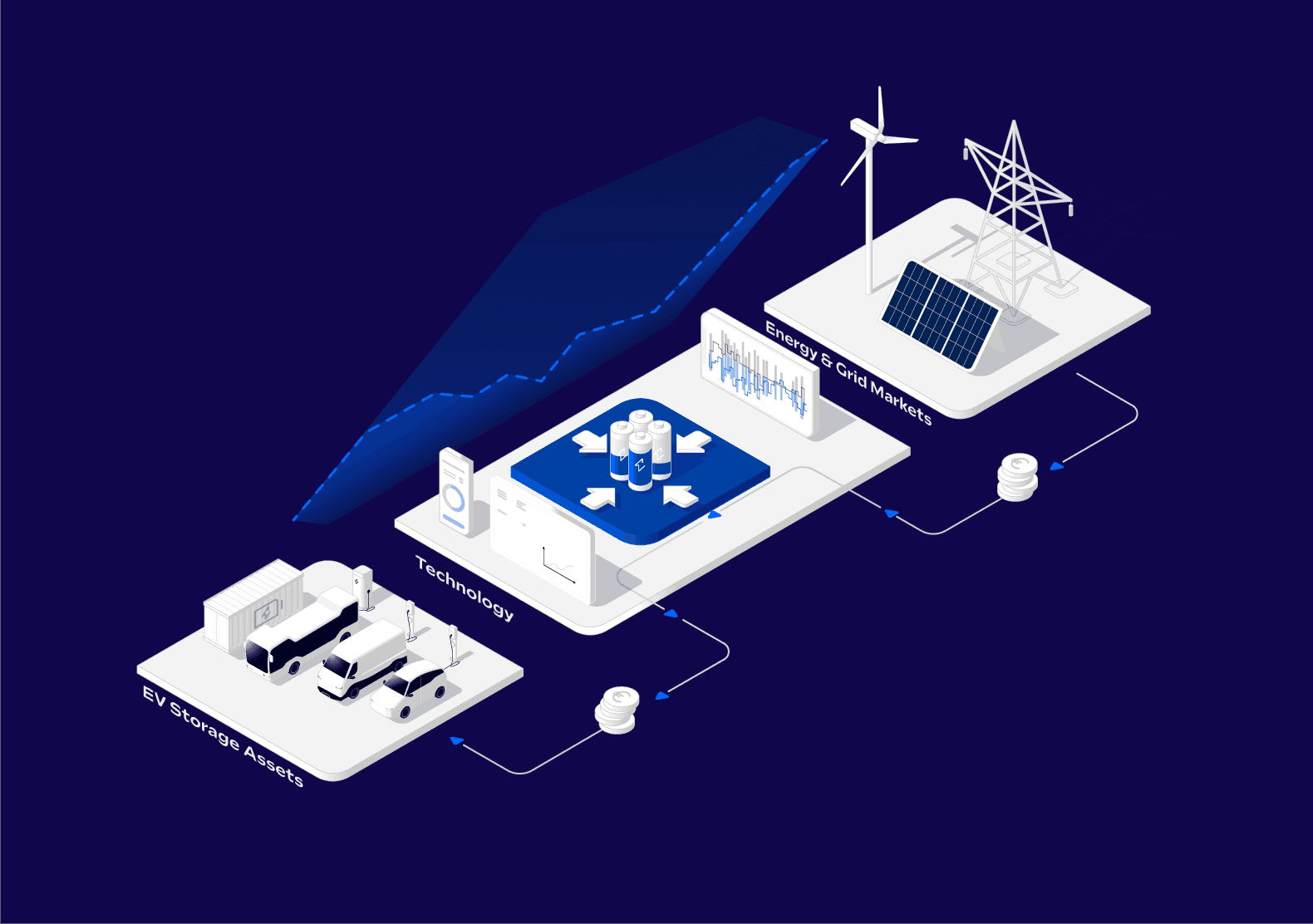> This part 1 of our series: "Turning commercial fleets into flexibility sources".
Why commercial fleets are an underestimated energy resource in the smart grid
Especially for large commercial fleets with hundreds or thousands of vehicles, Vehicle-Grid Integration (VGI) - the integration of vehicle batteries into the grid - plays a key role in efficiency, sustainability, and cost reduction.
High mileage, fixed downtime at depots, and centrally managed charging schedules provide the perfect conditions for using vehicles as mobile energy storage units within the Smart Grid.
Fleets can, for example, flexibly consume and feed electricity, take advantage of energy market price fluctuations, and actively contribute to grid stability - a decisive competitive advantage in logistics.
The benefits:
- Reduced operating costs
- New revenue sources
- Stronger integration into the energy system
The key: the real strength lies not in the individual vehicle but in the networked and intelligently managed fleet. That’s exactly where Vehicle-Grid Integration comes in.
Vehicle-Grid Integration: Added value beyond energy costs
In electrified fleets, energy costs often make up 20–40% of the so-called Total Cost of Ownership (TCO). Dynamic tariffs help, but they don’t unlock the full potential. VGI in the Smart Grid goes further - leveraging every kWh flexibly for maximum economic value.
Here’s how it works:
Control
The flexibility of charging times is leveraged to strategically charge or discharge (feed back into the grid) in line with market conditions.
Optimization
This goes beyond simple tariff models, ensuring that the highest economic flexibility value is always realized across different energy markets.
Savings
At the same time, no additional load peaks occur, since charging power is continuously adjusted – further reducing your grid fees.
The result: Compared to classic tariff optimization, VGI unlocks significantly higher value - without restricting mobility or creating extra operational effort.
The Mobility House Energy has already implemented this in France with Renault for private customers, enabling 10,000 km of free driving. European-wide we also cooperate with Mercedes-Benz - jointly developing VGI solutions to intelligently integrate Mercedes-Benz EVs with the energy system. Commercial fleets can benefit in a similar, or even greater, way.
Market intelligence instead of manual management
No one needs to worry anymore about which vehicle should charge where and when. Our AI-powered technology takes this complex task off fleet operators’ shoulders. In the background, market-based intelligence ensures that the value of flexibility is always maximized - while fleet mobility needs always remain the top priority.
Key functions of our technology:
- Aggregates your fleet’s charging and discharging potential
- Evaluates different market opportunities in real time within the Smart Grid
- Automatically decides where flexibility delivers the greatest economic value
And always with your fleet’s mobility as the first priority - all decisions are based on planned deployment schedules and charging targets.

Our technology smartly connects assets and energy markets
Our technology is the foundation for Vehicle-Grid Integration. It aggregates the battery flexibility of your fleet and connects your charging infrastructure with the relevant energy markets - and acts as a central interface to vehicles, charging points, grid operators, energy exchanges, and utilities.
✔️ Existing CPO and charging management systems can be connected directly
✔️
Energy providers can be seamlessly integrated
✔️ Alternatively, we can
provide the right V1G or V2G energy tariff along with it
Conclusion: From cost factor to revenue source in the smart grid
Your fleet doesn’t just generate electricity costs - it can actively contribute to lowering your overall operating costs. With Vehicle-Grid Integration, it becomes a controllable asset that:
- Reliably meets mobility needs
- Reduces energy costs sustainably
- Unlocks new revenue from the energy market
What’s next?
In the upcoming parts of this series, we’ll show what Vehicle-Grid Integration really means for EV fleets - and how you as a fleet operator, CPO, or energy provider can benefit.
